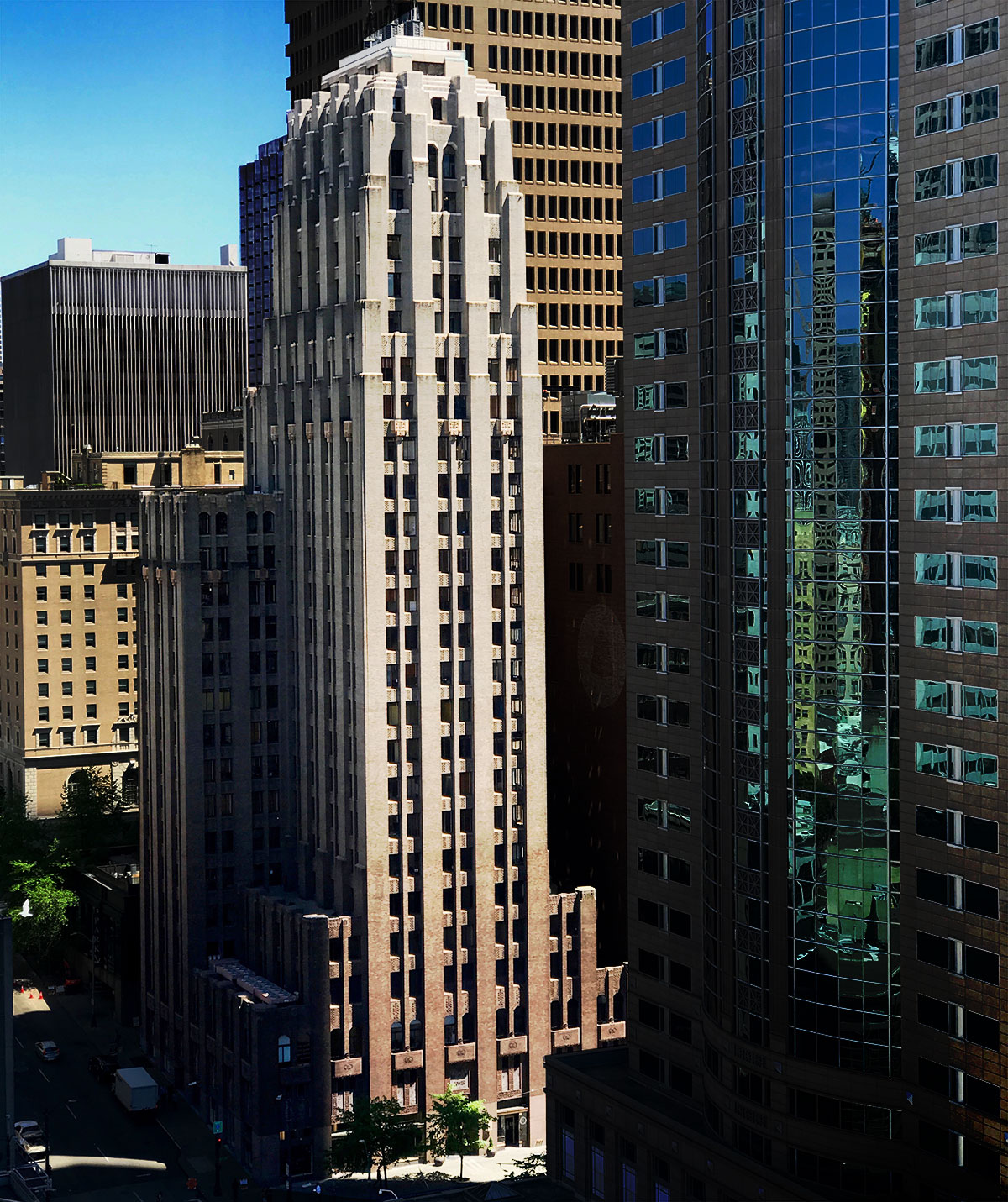Seattle Writing Prompts: The Seattle Tower
Seattle Writing Prompts are intended to spark ideas for your writing, based on locations and stories of Seattle. Write something inspired by a prompt? Send it to us! We're looking to publish writing sparked by prompts.
Also, how are we doing? Are writing prompts useful to you? Could we be doing better? Reach out if you have ideas or feedback. We'd love to hear.

There it stands, on the corner of 3rd and University. Twenty-seven stories tall, completed in 1928, this deco-style brick tower was a shining example of Seattle's upward momentum in the early part of the 20th century. It's a lovely building, and it's on the US National Register of Historic Places.
The problem is, talking to people from New York or Chicago, they have dozens — hundreds? — of buildings that raise to the mark of a modest deco tower such as this one. They won't think twice, like when the great museums who hold iconic works by painters don't think twice about smaller museums with lesser pieces, and they'll tell you how that building is nothing compared to what their city holds.
But a city holds what a city holds, and this beautiful tower is unique, and all ours. Did you know they graded the brick in 33 shades to make a facade that started dark and lightened as the tower grew? Did you know that 300 lights were used to illuminate the facade, to emulate the northern lights, and that's the name the locals gave the building?
I've been lucky enough to visit businesses in the building a number of times. A lovely marble lobby leads to classy elevators. The floors feel ... well, old. They don't seem modern, but they shouldn't, right? In one conference room, a window opens onto 3rd Avenue, and one could just hop on out onto the ledge where the spotlights used to sit.
I wonder if the owners have considered lighting it up again? I think it would be marvelous if this building — one of my very favorites in the city — called a bit more attention to itself.
But for now, let's see what stories we can find inside of it.
Today's prompts
It was a black cat, on the ledge, and there was no way that she was going to let it get stuck. By the cat was shy and wouldn't come in the twenty-third story window. Well, no doing, she'd have to go after it. She climbed out onto the ledge, and the cat ran around the corner. Then she looked down, and realized, it would be an awfully long way to fall. She grabbed hold of some brick for dear life, and was paralyzed on the spot.
Leaving your job is hard enough — you fill your box with all your stuff, and make that embarrassing walk in front of all of your now-ex co-workers to the elevators. It's even worse knowing the Depression will make them all have the same fate soon enough. But it's triple worse when your boss is introducing a new hire as you're leaving, and you know two things: that person is going to lose their job any day, and that when you were making the walk of shame, you caught each others eyes, and ... wow. Fireworks.
He called himself Spider-Man. He was going to make the news that day by scaling the Seattle Tower. It was going to be a brilliant stunt. All the talk shows would want to talk to him. Sure, it wasn't the tallest building in Seattle in 1977, but it was one of the most iconic, and frankly, the easiest due to the facade construction. He set out, around 6 a.m., and approached the building from the 3rd Avenue side, looking up, feeling ready and excited. But something caught his attention from the nearby newsstand. A radio broadcast — a man, calling himself the Human Fly, was climbing the World Trade Center, and he had been at it for hours. Today, of all the days.
There were 300 lights on the outside of the building, and it was his job to change them when they burned out. For fifteen years those lights shone up, making a gradient from the ground to the top, emulating the northern lights. In fact, that's what the locals called it — the Northern Lights building. But now, in 1942, the West Coast was going on blackouts to avoid giving Japanese bombers targets. So now it was his job to go dismantle every single fixture so that they couldn't be turned on, even if by a traitor.
First day in the brickyard his boss said, "Look, kid, I don't care how you do it or what you do, but the crazy architect wants us to sort these by color. Just break them into three or four groups by the way they look, got it?" He got it. He got that his new boss didn't know how to use his eyes. The problem wasn't sorting a mountain of bricks into three groups; the problem was going to be sorting them into less than three hundred.